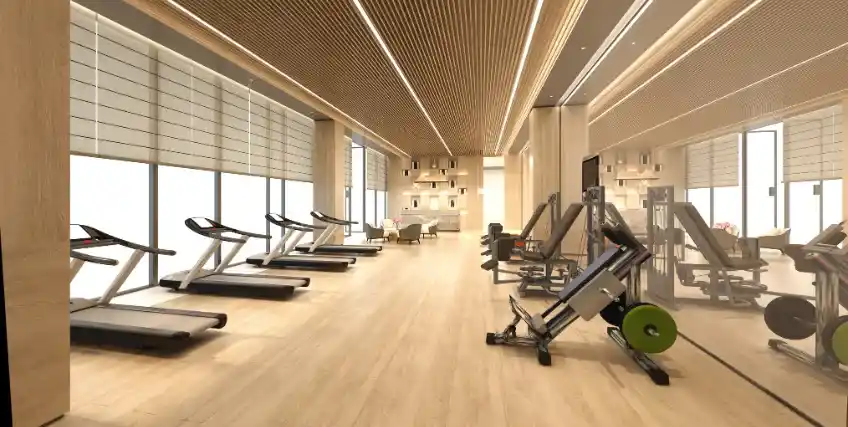Breaking Down the Startup Cost for a Gym What You Need to Budget
September 22, 2025 | Last Updated on: September 22, 2025

The startup cost for a gym is one of the biggest hurdles aspiring fitness entrepreneurs face, yet understanding this complex budget is the only way to move from dream to reality in starting a gym business.
Not only does the financial journey span thousands to millions of dollars, but successfully opening a gym startup costs careful navigation of hidden royalty fees, long-term commitments, and smart planning, a crucial narrative for anyone seeking lasting impact in the fitness industry.
This article will break down every component, guiding new owners step-by-step while helping set expectations, build confidence, and drive traffic for those searching for real numbers and actionable insights online.
The Real Cost of Starting a Gym
Grasping the startup cost for a gym starts with understanding the wide range: a modest boutique club would open its doors for roughly $10,000 to $50,000, but a full-service club could easily cost over $500,000 or go way over $1 million in upscale urban environments.
The gap between small gym startup budgets and "mega-gym" budgets is guided by real estate, build-out, equipment buy decisions, and desired member experience.
While some try to cut corners by opening with minimal equipment in a rented facility, others spend lavishly upfront to draw a more upscale clientele and offer complete amenities. Creating your vision is the compass that guides your budget.
Location: Foundation of your gym startup costs
Of all the determinants of startup cost for a gym, none has a greater return on investment and long-term outlay than location of your gym.
Rent in a high-traffic metro area can be anywhere from $6,000 to over $15,000 per month for 2,000 square feet, while space in suburban or rural settings is considerably less expensive, sometimes less than $3,000 per month, according to Trafft.
Buying property outright requires a significant down payment and funds for refurbishment, whereas leasing offers flexibility but may limit the scope of improvements feasible.
Throw in security deposits (three to six months' rent is common), buildout costs to ready the location for gym usage, and possible permit or zoning fees, and the initial investment rises dramatically before so much as a dumbbell is purchased.
Renovation: Transforming space into brand
Rehabbing and equipping your facility, adding adequate flooring, HVAC, mirrors, locker rooms, accessible facilities, sound, and lighting, can range from $15,000 for smaller studios to more than $100,000 for a mid-sized gym, depending on design intent and square footage.
Specialty clubs or those attempting to establish a strong brand presence will put more money into aesthetics, signage, and member amenities because they understand that such investment translates to dividends in retention and premium pricing. It is an expense that is tangible and closely associated with long-term growth.
Equipment: The heartbeat of the gym
Arguably, there is nothing that people are more excited about than new gym equipment, but it's a top-line item in any budget, especially when considering the initial startup cost for a gym. To outfit a small personal training room, the startup cost for a gym typically ranges from $10,000 to $50,000.
In contrast, building a competitive commercial gym could cost $100,000 or more, including cardio, strength, and specialty equipment. Quality equipment attracts members and withstands day-to-day use, whereas lower-cost alternatives may lead to higher repair startup cost for a gym or customer attrition in the future.
Successful gyms often blend financed and leased equipment to buy time, so the owners can keep up with the latest trends and technology.
Licensing, insurance, and compliance
Even with a building and machines, a gym cannot open its doors until it meets all legal documents and regulatory obligations. Registration, licensing, and permits can add additional costs o the startup cost for a gym, expenses that are location, business plan, and amenity dependent, such as daycare or smoothie bars.
The liability and property of gym insurance typically range from $500 to $2,500 annually, and owners frequently spend more money on fitness professional services to meet local regulations and codes. Shortcuts in this department can lead to catastrophic delays, making compliance startup cost for a gym a form of crucial fitness business insurance.
Payroll and staffing: Nurturing the culture
Typically, running a gym involves the hiring of certified trainers, front-desk administrators, janitorial staff, and in some cases, sales representatives for membership management and outreach.
Although part-time employees or owner business models can reduce initial startup costs for a gym or small gyms, most new gyms must budget at least $10,000 for pre-launch payroll and training expenses. Larger gyms typically budget between $15,000 and $40,000 or more before they can bring in their first member.
Proper staffing sets the tone for community and safety and helps to build up-front momentum for soft launch events.
Technology, software, and digital presence
The technology needs have increased exponentially for gyms. Investing $2,000–$10,000 in gym management software, member portals, and scheduling apps repays with streamlined operations and enhanced retention.
Investing upfront in a responsive website and good SEO positions the gym for organic Google traffic and an underpriced engine for driving and converting leads, not just at grand opening but for the long term.
Marketing and launch campaigns
No matter how attractive the building is, a gym requires a multi-faceted approach to opening and marketing strategies. Branding signs, local sponsorships, and even small business clothing must also be factored in, especially for owners who want to position themselves as a fitness center, not just a gym to work out.
Understanding One-Time vs. Ongoing Startup Costs
For example, the startup cost for a gym is based on massive, one-time payments: security deposits, renovation, equipment costs, licensing, and in-house infrastructure.
Yet normal expenses like utilities, insurance payments, cleaning, and wages may quickly reach $10,000–$30,000 as per monthly cost, depending on the gym size and vision of the business.
Identifying this dichotomy avoids surprises of post-opening-day cash flow shortfalls and inspires more realistic fundraising, often through loans or investors drawn to detailed budget projections.
Funding Your Dream: Financing Options for Gym Startups
Due to the prohibitive startup cost for a gym, few gym owners finance their openings with strictly personal funds. SBA and traditional business loans offer competitive rates and repayment terms for meticulously prepared candidates.
Equipment financing enables owners to stretch finite funds without sacrificing quality. Angel investors and strategic partners may want an equity stake in operations or revenue, while franchise models sometimes lower barriers through standardized packages and branding, with an upfront franchise fee and ongoing costs royalty payments factored in.
Small Gym Startup Costs: A More Accessible Path?
To most entrepreneurs, small gym startup costs provide a more practical starting point.
Personal trainers, pilates, yoga, and group classes studios typically start between $15,000 and $100,000, the minimum needed to lease a smaller space and core facilities, and start lean and build momentum through grassroots marketing.
The trade-off is lower overhead but lower member capacity, too, so space efficiency, partnerships, and niche marketing become essential to profitability and growth.
Hidden Operational Costs and Pitfalls When Starting a Gym Business
Every gym business owner faces unavoidable setbacks, including replacing outdated HVAC systems, a greater-than-anticipated buildout startup cost for a gym, lawsuits, or changes in member preferences. Maintaining a contingency fund is a buffer to weather these storms.
Selecting good vendors, over-communicating with contractors, and building financial and legal professionals into your network are crucial for staying out of the pitfalls that ruin even the best-planned gym opening.
Final Thoughts
To succeed, every gym owner must internalize the actual extent of the startup cost for a gym, align ambition with thrifty budgeting, and continually practice market research with new concepts and authentic neighborhood creation, keeping the target market in mind.
A gym venture opening is not just math; it's about narrative, building a brand that captures local passion, delivering an improved experience, and adapting with tenacity as startup cost for a gym and trends shift.
Fortune favors the ready minds who learn, adapt, and invest where it matters most, transforming what starts as an Excel spreadsheet into a real, thriving community center that yields healthy returns far above the startup costs for a gym. Success is the domain of owners who treat budgets as something more than limitations, but as an invitation to build something truly extraordinary.
FAQs About Startup Cost for a Gym
What are the startup costs of a gym?
The startup cost of a gym depends on countless different variables, including location, size, equipment, lease arrangements, and whether to build new or buy an existing building.
How much money do you need to build your own gym?
For a household or small-scale operation, the starting cost of a gym can range typically from $5,000 to $50,000. For a high-end, large gym facility with diverse equipment and warranty coverage, the starting cost of a gym can range from $100,000–$500,000 or more.
What is the best gym layout?
An effective gym floor layout divides regions of weight training, cardio exercise, and classes. Machines are spaced apart for easy passage through, with open traffic paths for gym members, especially at peak hours, to minimize inconvenience and facilitate smooth movement around the entire gym space.
Is owning a small gym profitable?
Small gyms can be profitable if overhead is effectively managed. Success hinges on niche specialization, premium service, community involvement, strong marketing efforts, and high member retention. But as with any business, bad planning or mismanagement of the gym startup cost for a gym can result in failure.
What insurance is needed to open a gym?
A gym would typically require general liability insurance against injury, property damage, or harm to reputation. Professional liability insurance protects against professional services errors. Having an active business license and sufficient coverage helps ensure protection of your investment and promotes feasible operations.
Frequent searches leading to this page
Term Loans are made by Itria Ventures LLC or Cross River Bank, Member FDIC. This is not a deposit product. California residents: Itria Ventures LLC is licensed by the Department of Financial Protection and Innovation. Loans are made or arranged pursuant to California Financing Law License # 60DBO-35839




